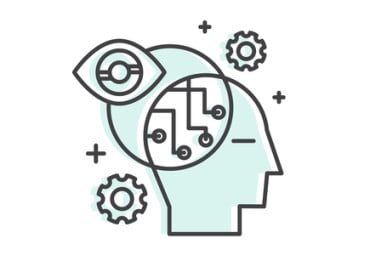
The Covid-19 pandemic pushes many enterprises to re-consider their digital transformation and modernization initiatives, especially for automation.
The Covid-19 pandemic is causing significant shifts and disruptions in all industries. It is also providing challenges and opportunities for IT departments. Recently I participated in a panel hosted by vTechSolution, where we covered several critical challenges – and opportunities – for IT.
Here is the video of the panel, and here I would like to highlight some of the essential dimensions from my discussions in the panel.
For a robust background of the Covid-19 IT challenges, check the two-part RTInsights articles on 2020 Trends and Challenges Impacted by Covid-19: Part I and Part II.
Video conferencing tools such as Zoom, Cisco Webex, Microsoft Teams, GoToMeeting, and others have witnessed an explosion in downloads and use. Conservatively virtual conferencing and the use of virtual conferencing tools is at least an order of magnitude more than pre-Covid-19. IT Needs to provide the robustness for the enterprise platforms and solutions for the consumer and the employees. For example, a recent survey has indicated 72% of consumers had their first-ever virtual care visit during Covid-19.
Virtualization impacting IT and the workspace post-Covid-19
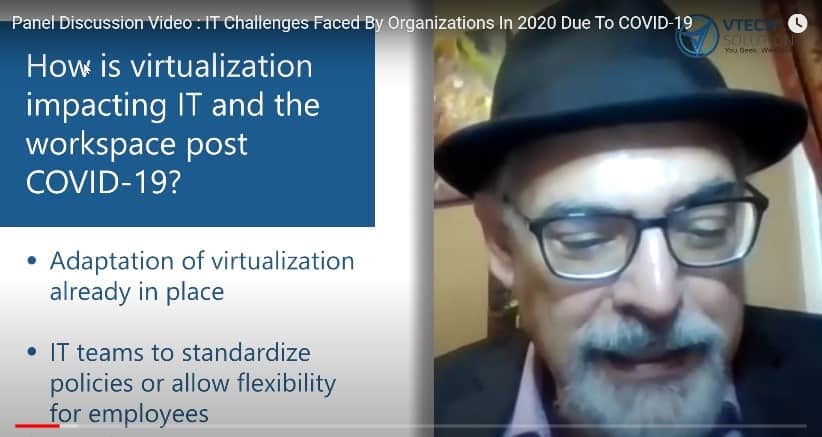
Equally crucial to virtualization are the collaboration tools on the Cloud have become much more critical in the Covid-19 era. Recently I participated in a couple of sessions with Miro for Design Sprint collaboration on the Cloud. It was very productive, and such tools are increasingly being leveraged in conjunction with video conferencing.
Cloud usage is increasing due to Covid-19. IT departments are accelerating the migration to public Cloud infrastructures.
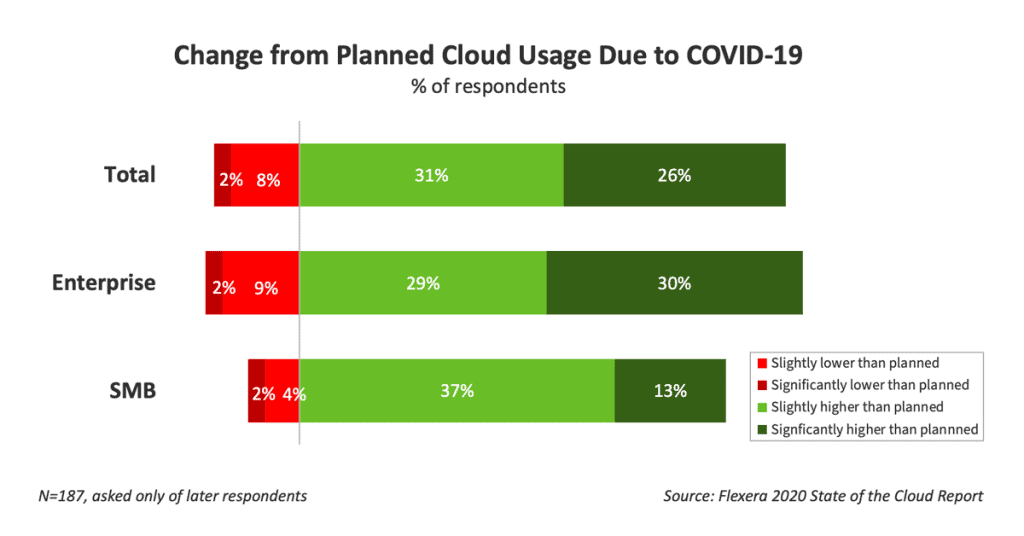
Automation
The Covid-19 pandemic pushes many enterprises to re-consider their digital transformation and modernization initiatives, especially for Automation. Even before Covid-19, there were already trends in play that were utterly transforming the workforce. The labor world post-Covid1-9 will be quite different. Enterprises entrenched in rigid structures and unwilling to change will not survive. Even before Covid-19 in 2019, Gartner had identified hyperautomation as the number one trend in 2020.
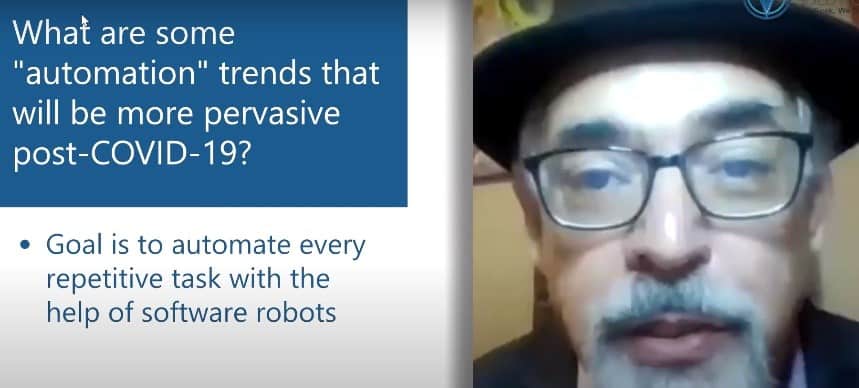
- Repetitive Work – Automated through Robots and Robotic Automation: Repetitive desktop tasks could be automated through Robotic Software Automation — saving a considerable amount of time. Process mining, followed by careful analysis for operational efficiency, should precede any deployment or execution efforts with RPA. Covid-19 is causing a sharp increase in Automation in all sectors.
- AI-Assisted Work: Now, for more mission-critical and higher business value (and typically higher transaction volume) tasks, you have AI-assisted workers that are guided by increasingly intelligent software that leverages business rules, analytics, and machine learning. It is like having a smart Siri or Alexa, helping the worker complete their tasks.
- Cognitive Work: Cognitive workers are experts. All industry sectors are experiencing both remote work with AI-assisted Automation and involvement of cognitive workers who are exceptionally good in providing expertise and dealing with exceptions. No “Artificial” intelligence will be able to replace this category of workers. The human touch and involvement are even more critical during the Covid-19 era.
Low Code/No Code
Together with Automation, enterprises need to be in-motion with resilience and survivability. Low Code/No Code substantially improves the speed of application development.

Low Code/No Code is the next phase in the evolution of programming (aka coding). The transition from assembly to high-level procedural programming (examples include C and Pascal) and then from high-level procedural languages to object orientation (examples include Java and C#) enabled us to achieve substantial productivity gains. Now we have Low Code/No Code.
Low Code/No Code opens up the opportunity for IT and Business to speak the same language.
IT needs to get ready and promote Low Code/No Code for transformation and agility in the Covid-19 era. No Code/Low Code targets Citizen Developers. Who is the Citizen Developer? Business stakeholders in Enterprises, Operations subject-matter experts, and yes, conventional programmers are Citizen Developers that benefit from Low Code/No Code.
There is a whole spectrum of Low Code/No Code platforms for internal applications and customer or constituent facing. IT has to analyze, decide, and promote Low Code/No Code platforms – this is revolutionary but can provide tremendous productivity opportunities – critical in the Covid-19 era to do more with less.
The most important is to address the challenges of Digital Technology Debt.
Technologies and Cultural Changes Post-Covid-19
Digital Transformation Debt is accumulating at a much faster rate due to the Covid-19 challenges. These are the ten dimensions of DTD and are covered in more detail on Forbes: Part I and Part II.
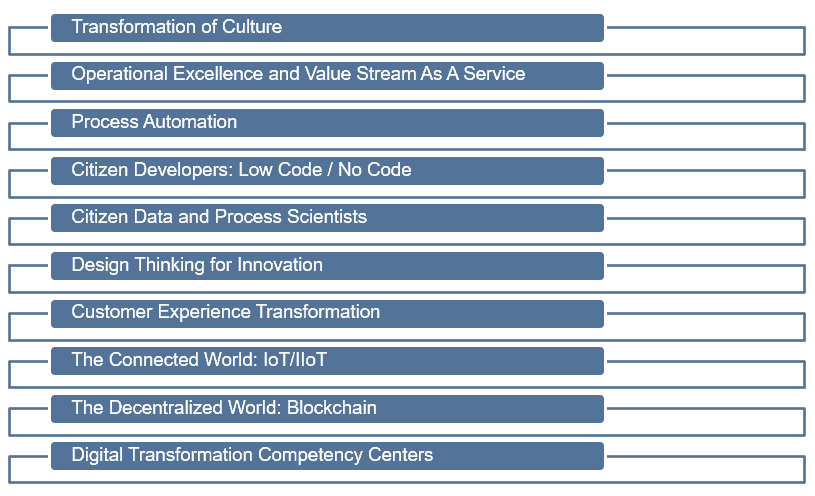
We are becoming extremely connected. Internet of Things is critical in the post-Covid-19 era. IoT needs to be part of the IT technology stack. There needs to be a reference architecture, including an IoT layer. There is an explosion of Smart City IoT technologies. For example, in case of an adverse event, the Smart City can leverage its connected devices through collaboration with multiple agencies to respond in real-time.
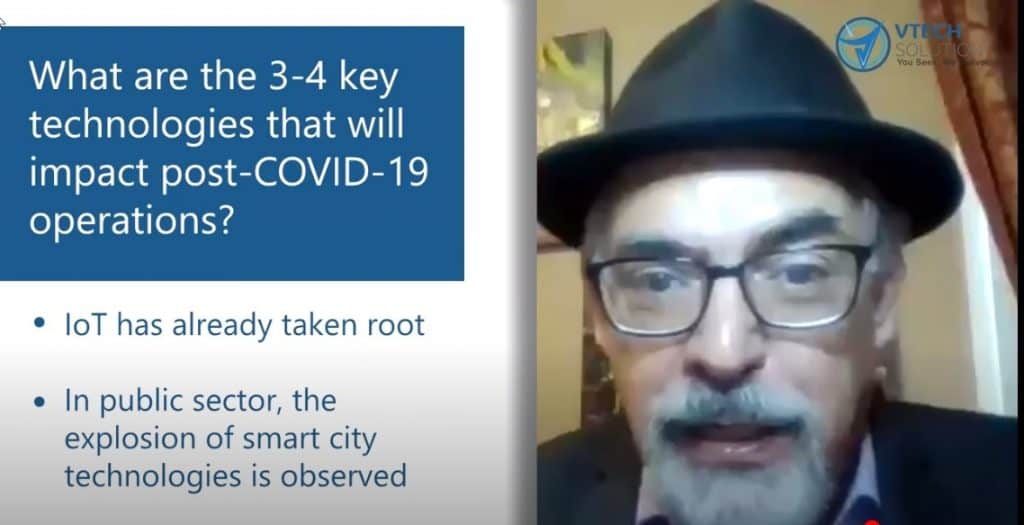
Another technology is the Decentralized world. So, we are moving to the Connected world and the Decentralized world. You have heard it as Blockchain. It is a boring technology, but it has a transformational impact, especially in areas such as Supply Chain. We can leverage technologies such as 3D printing. But IT needs to be involved in inter-enterprise connectivity.
For innovation trends, there are four interdepend innovation areas, and IT is critical:
- Innovation in the customer or constituent experience
- Automation of innovative, re-engineered, and modernized processes
- New and innovative solutions: enterprises need to disrupt themselves – every company needs to be an entrepreneur, and IT is the catalyst.
- Competency centers for IT transformation with technologies such as Low Code/No Code becomes a catalyst.
To hear the discussion with some additional examples, check the video of the panel.




